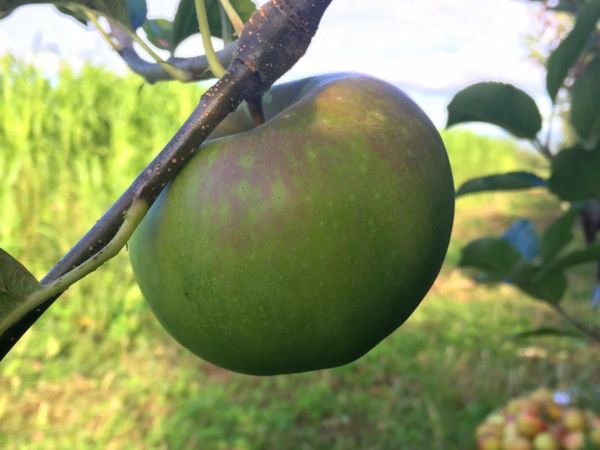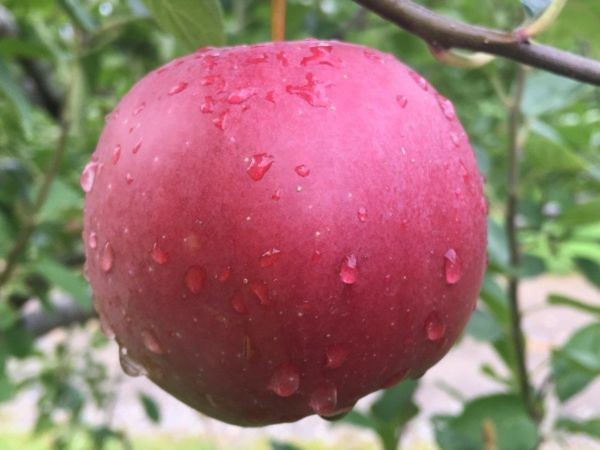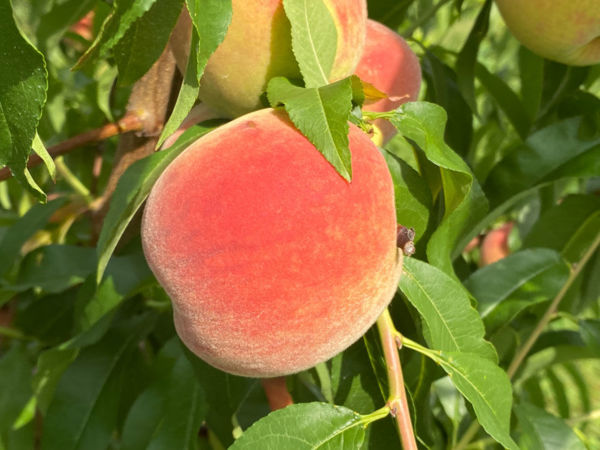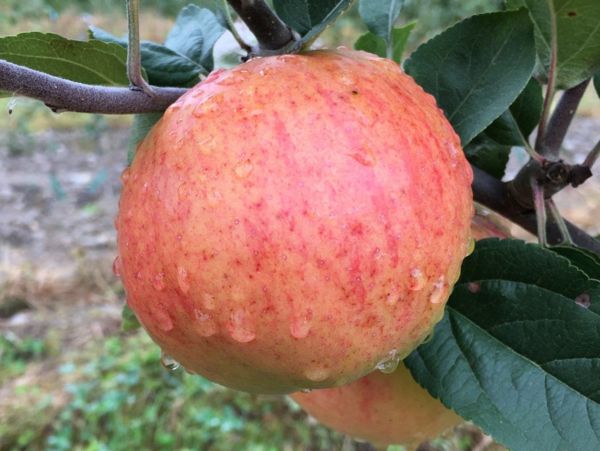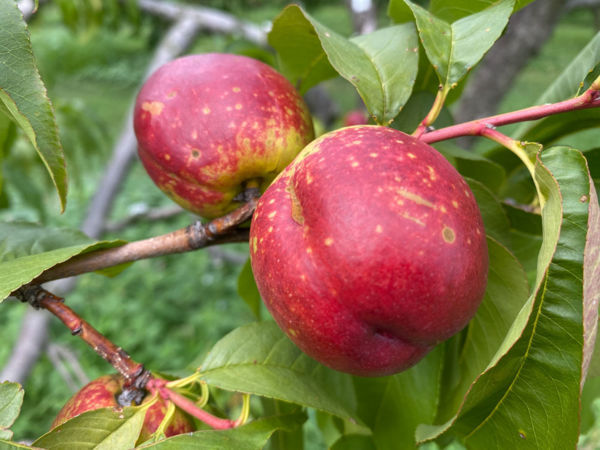An attractive, highly disease-resistant apple, ideal for organic growers.
Newtown Pippin Apple on G.210 (Spring 2025)
You are viewing a tree that will ship in Spring 2025. You can also find trees for Spring 2024.
A storied American heirloom apple with excellent keeping quality. Also known as Albemarle Pippin, Yellow Newtown.
The tree is hardy to zone 4, biennial tending, and somewhat slow to bear. Newtown Pippin is susceptible to apple scab and moderately susceptible to all other major apple diseases.
This heirloom is a late-harvested, medium-large, flattish round, green-skinned, yellow-tinged, slightly russeted apple with a remarkably balanced sweet-tart flavor and an aroma often described as piney. Newtown Pippin is an heirloom noted for the quality of the fresh and fermented cider it yields, its superior baking qualities, its excellence as out-of-hand eating apple, and its ability to mellow and improve in flavor with storage.
Newtown is reported to have first been found growing as a seedling on the estate of Gershom Moore in Newtown (now Elmhurst), Queens, NY, but when it arrived in Virginia, it was given the name Albemarle. It was a favorite of several founding fathers including George Washington, Benjamin Franklin, and Thomas Jefferson, who grew them at Monticello and who wrote from Paris, "They have no apples here to compare with our Newtown Pippin." During the 19th century, the Newtown Pippin experienced significant commercial success. It was part of the Select List of Apples kept by the Horticultural Society of London in 1807 and commanded the highest prices at Covent Garden. Queen Victoria so favored them that the British Parliament lifted the import duty on Newtown Pippins until World War I. In more recent history, the pomologist Tom Burford has included Newtown Pippin in his list of Top 20 Dessert Apples.
Perhaps the most interesting of the many stories surrounding Newtown Pippin is the tale of its journey to Virginia. On July 7, 1755, General Braddock and his forces were severely defeated in battle against a French fort in eastern Pennsylvania. Among his troops was a militia from Virginia that was commanded by a young George Washington, who sought winter refuge in Philadelphia. There was also a physician named Captain Thomas Walker from Castle Hill, Albemarle, Virginia. It was this Captain Walker who, before heading back to Virginia, filled his saddlebags with tree cuttings that included Newtown Pippin wood, which he propagated on his return to Albemarle. For some time later it was thought that the Albemarle and the Newtown Pippin were distinct trees, but it has since been concluded that differences in appearance and taste are due to soil and climate conditions rather than varietal differences.
The Fruit
Fruit Type
Category: Apple
Subcategory:
Heirloom, Cider, Cold-Hardy, Hot-Climate
Fruit Uses & Storage
Uses: fresh eating, cider, baking, storage, jelly, sauce
Cider classification: sharp
Storage duration: three plus months (approximate, depending on storage conditions)
Fruit Appearance
Skin color: green
Flesh color: yellow
Fruit Origins
Parentage: unknown
Origin: Newtown, Queens, New York
Introduced in: 1720
Introduced by: Gershom Moore
The Environment
Calendar & Geography
USDA zones: 4 - 8
Chill hours: 700
Ripening date: Nov 03 (approximate, in New York State) + 49 days after McIntosh
Tree Height & Spacing
glossary
Rootstock: G.210 Rootstock
Rootstock size class: Semi-Dwarf (40% of Standard)
Tree spacing (natural spread of tree): 12'
Good for wildlife planting? N
Diseases & Pests
glossary
Powdery Mildew: Susceptible
Cedar-Apple Rust: Susceptible
Apple Scab: Susceptible
Fireblight: Susceptible
Perennial Canker: Susceptible
Pollination
Pollination Factors
glossary
Bloom group: 3
Is it self-fertile? N
Is it fertile? Y
Ploidy: Diploid
Rootstock size class:
Semi-Dwarf (40% of Standard)
Pollination Partners
This table shows the first few results from a full search for pollenizers of Newtown Pippin Apple on G.210. Please see our Pollenizer Search to run other queries and read how the application uses various factors. Also read more about fruit tree pollination.
See all pollination matches for Newtown Pippin Apple on G.210
Featured Products
A few things we're loving right now...
A full-flavored, freestone white peach.
A traditional semisharp cider apple from Spain.
A widely-grown, large, yellow-fleshed nectarine.











